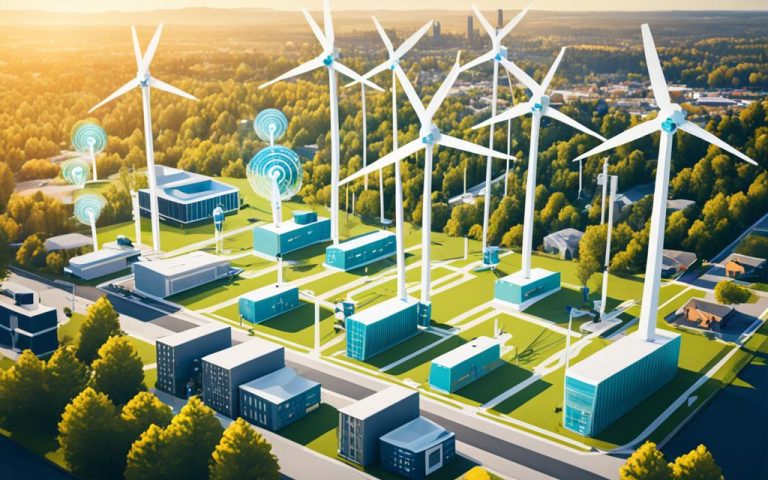In the ever-evolving world of wireless infrastructure, staying ahead of future trends and emerging technologies is crucial. As we look towards the year 2024, several key developments are expected to shape the landscape of fixed wireless networks. These advancements will not only expand connectivity options but also pave the way for innovative solutions in various sectors.
One of the primary driving forces of change is the ongoing deployment of 5G networks. In 2023, 5G-powered Fixed Wireless Access (FWA) witnessed remarkable success and accounted for a significant portion of net broadband adds in the US. This achievement not only showcased the capabilities of wireless connectivity but also highlighted the importance of spectrum allocation for commercial use.
Open RAN, network densification, in-building connectivity, spectrum allocation, and artificial intelligence (AI) are amongst the many trends that industry experts predict will define the future of fixed wireless networks. These technologies hold the potential to revolutionize the wireless infrastructure industry, offering enhanced connectivity options and improving overall network performance.
Furthermore, there has been a notable shift in the funding models for wireless projects. Carriers are stepping back, and enterprises are taking the reins, recognizing the advantages of controlling their own networks for security, reliability, and practicality purposes. Additionally, with code regulations enforcing in-building wireless infrastructure for first responder radios, the demand for in-building connectivity is set to rise.
Mid-band spectrum deployment is another significant development on the horizon. As the demand for high-speed internet continues to surge, wireless carriers are incorporating mid-band spectrum to deliver fast speeds with broad coverage. This expansion not only enhances connectivity options but also ensures seamless experiences for residential, commercial, industrial, and government sectors.
In conclusion, the future of fixed wireless networks is brimming with exciting possibilities. Advancements in Open RAN, network densification, in-building connectivity, spectrum allocation, and AI will play a pivotal role in shaping the industry. As the world embraces the next era of wireless technology, these trends will provide businesses, governments, and individuals with reliable, high-speed connectivity options and pave the way for a seamlessly connected future.
The Success of 5G-powered Fixed Wireless Access (FWA)
In 2023, the wireless industry witnessed a significant impact from the success of 5G-powered Fixed Wireless Access (FWA) in the United States. This technology accounted for a significant portion of net broadband additions, demonstrating the capabilities of wireless connectivity and its potential for providing high-speed internet access.
The success of 5G-powered FWA highlights the importance of freeing up more spectrum for commercial use. As the demand for connectivity continues to grow, it is crucial to allocate sufficient spectrum resources to support the expansion of wireless networks and meet the evolving needs of consumers and businesses.
“5G-powered FWA has showcased the capabilities of wireless connectivity and the importance of freeing up more spectrum for commercial use.”
Furthermore, the achievement of 70% coverage of the US population by DISH signifies the intense competition and innovation in the wireless communications sector. This milestone demonstrates the significant progress made in expanding access to reliable connectivity and bridging the digital divide.
Looking ahead to 2024, the deployment of AT&T’s Open RAN in collaboration with Ericsson will have a profound impact on the overall wireless ecosystem. Open RAN, which aims to enhance network efficiency and flexibility, will further drive the adoption of FWA and contribute to the expansion of connectivity options.
The influence of artificial intelligence (AI) on network deployment and management will also be a key trend to watch in the coming years. AI can optimize network performance, predict maintenance requirements, and enhance the overall user experience, making it an essential tool for managing the complexities of 5G-powered FWA.
Overall, the success of 5G-powered FWA in 2023 has paved the way for enhanced connectivity options and highlighted the importance of spectrum allocation. As the industry progresses, continued advancements in FWA and the integration of AI will shape the future of fixed wireless networks, enabling seamless and reliable connectivity for individuals, businesses, and communities.
Shifting Focus to Enterprise-funded Wireless Projects
One of the significant developments in the wireless infrastructure industry in 2023 was the shift from carrier to enterprise-funded wireless projects. Carriers have stepped back from funding most wireless projects, while businesses have recognized the benefits of controlling their own networks for security, reliability, and practicality purposes. The enforcement of code regulations for first responder radios inside buildings has also increased, leading to a higher demand for in-building wireless infrastructure. With companies returning to their offices and investing in wireless infrastructure, the focus on enterprise-controlled networks and in-building connectivity will continue to grow in 2024.

Mid-band Spectrum Deployment and Fixed Wireless Expansion
The demand for high broadband speeds is on the rise as customers increasingly rely on their devices for work, school, telehealth, and as hotspots. To address this growing need for enhanced connectivity, wireless carriers are deploying mid-band spectrum, which offers fast speeds and broad coverage.
This mid-band spectrum deployment has paved the way for the expansion of 5G networks, surpassing initial expectations. Through the use of fixed wireless technologies, these networks have significantly improved both mobile experiences and home internet speeds.
In 2024, this expansion of mid-band spectrum and fixed wireless technologies will continue to play a key role in enhancing connectivity options across various sectors. Residential, commercial, industrial, and government entities will benefit from the availability of faster and more reliable internet connections.
Benefits of Mid-band Spectrum and Fixed Wireless Expansion
- Fast speeds: Mid-band spectrum allows for high-speed internet connections, enabling seamless browsing, streaming, and downloading experiences.
- Broad coverage: By deploying mid-band spectrum, wireless carriers can provide broad coverage, reaching more customers and improving connectivity in previously underserved areas.
- Increased capacity: The expansion of fixed wireless technologies allows for the handling of more simultaneous connections and the support of bandwidth-intensive applications.
- Cost-effective deployment: Leveraging existing infrastructure, such as cell towers and antennas, reduces the costs associated with deploying fixed wireless solutions.
The Future of Fixed Wireless Expansion
The continued deployment of mid-band spectrum and fixed wireless technologies is expected to contribute to a future characterized by enhanced connectivity and improved internet access for all.
As wireless carriers continue to invest in expanding their networks, customers can look forward to faster speeds, wider coverage, and more reliable connections. This progress in fixed wireless expansion will pave the way for innovative applications and services, supporting the increasing reliance on digital connectivity in various industries.
With the ongoing evolution of mid-band spectrum deployment and the continued integration of fixed wireless technologies, the future holds promising possibilities for enhanced connectivity, transforming the way we live, work, and communicate.
Conclusion
The future of fixed wireless networks is set to witness significant advancements in Open RAN, network densification, in-building connectivity, spectrum allocation, and artificial intelligence (AI). These emerging technologies and trends will shape the wireless infrastructure industry in the coming years, offering enhanced connectivity options for businesses, governments, and individuals.
As the demand for reliable and high-speed connectivity continues to soar, the ongoing development and implementation of these innovative technologies will play a crucial role in meeting these needs and enabling seamless connectivity experiences. Open RAN, with its open and interoperable architecture, will drive competition, foster innovation, and ensure the deployment of cost-effective and efficient wireless solutions.
Network densification, along with the strategic deployment of small cells and increased coverage, will enhance network capacity and improve the overall connectivity experience. Simultaneously, in-building connectivity solutions will cater to the growing demand for reliable wireless service indoors, ensuring smooth communication and seamless user experiences across various settings.
Spectrum allocation will also play a vital role in the future of fixed wireless networks, as the availability of the right frequencies will enable wireless carriers to deliver enhanced connectivity speeds and capacity. Additionally, the integration of artificial intelligence (AI) into network deployment and management will optimize operations, improve efficiency, and unlock new possibilities in the realm of fixed wireless.
FAQ
What are some future trends in fixed wireless networks?
Some future trends in fixed wireless networks include Open RAN, network densification, in-building connectivity, spectrum allocation, and artificial intelligence (AI).
How did 5G-powered Fixed Wireless Access (FWA) impact the industry in 2023?
5G-powered FWA had a significant impact in 2023, accounting for a large portion of net broadband adds in the US. It showcased the capabilities of wireless connectivity and emphasized the importance of freeing up more spectrum for commercial use.
What is the shift happening in the wireless infrastructure industry regarding funding?
There is a shift from carrier to enterprise-funded wireless projects. Carriers are stepping back from funding most wireless projects, while businesses are recognizing the benefits of controlling their own networks for security, reliability, and practicality purposes.
Why is there an increased demand for in-building wireless infrastructure?
The enforcement of code regulations for first responder radios inside buildings has increased, leading to a higher demand for in-building wireless infrastructure. Additionally, with companies returning to their offices and investing in wireless infrastructure, the focus on enterprise-controlled networks and in-building connectivity is growing.
How are wireless carriers meeting the demand for high broadband speeds?
Wireless carriers are meeting the demand for high broadband speeds by deploying mid-band spectrum, which provides fast speeds with broad coverage. The expansion of mid-band 5G networks has improved the mobile experience and home internet speeds through fixed wireless technologies.
What is the future of fixed wireless networks?
The future of fixed wireless networks will be shaped by advancements in Open RAN, network densification, in-building connectivity, spectrum allocation, and AI. These technologies and trends will provide enhanced connectivity options for businesses, governments, and individuals.



















